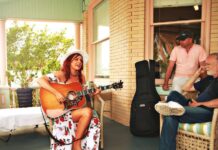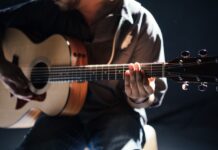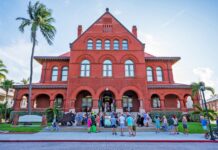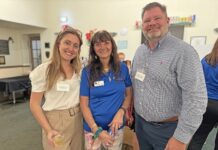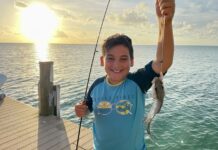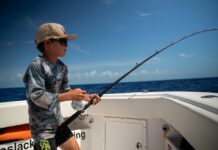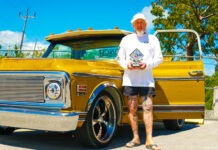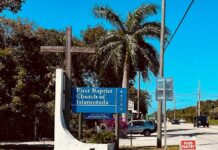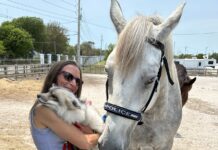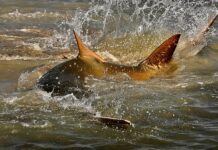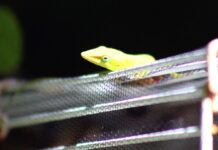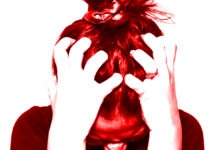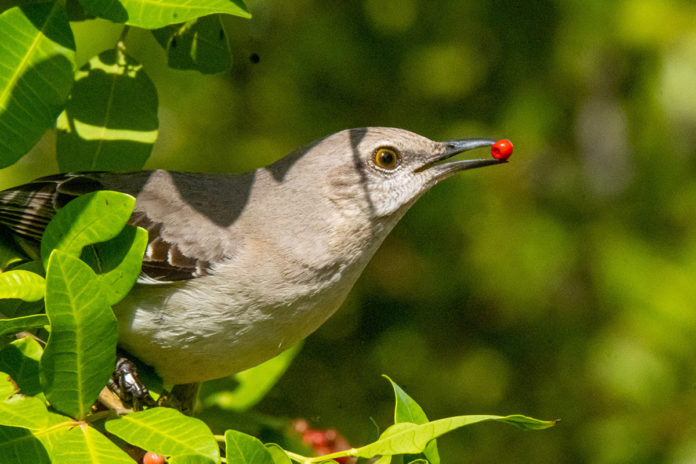
I was thinking about Fran Ford the other day. Possibly because I was sitting on a bench in the shade of a giant ficus tree in the middle of the Fran Ford White-Crowned Pigeon Preserve on Government Road. Possibly because I thought it was her birthday. (Turns out, I was a couple weeks late.)
It was quiet there, except for the jets roaring into the air a few hundred yards away, one after the other.
There were no actual white-crowned pigeons, but they are more of a summer thing than a winter thing – they’ll be back in numbers in April. But there were some other birds around.
If I looked up from the bench I could see the kiosk with the damn nice, recently rebuilt signboard. Behind the plexiglass were the pictures and names of the birds and butterflies the preserve was meant to be about – white-crowned pigeons, but also ospreys, white ibis, scissor-tailed flycatchers, zebra longwings, gulf fritillaries, etc.
If I looked down, there was the trash-strewn grass — a 5-Hour Energy Drink bottle, a Campbell’s Cream of Mushroom soup can, a serious number of cigarette packs (mostly 305s), an uncountable number of cigarette butts, the inevitable Fireball bottle…
Fran’s been gone a couple years now, but I wondered how she would have dealt with the scene, the cognitive dissonance of the high and the low.
For those who didn’t know her, Fran Ford was a force both of and for nature. She was like the Tasmanian Devil, energy-wise, 5-foot-nothing and always in a khaki skirt and a straw boater. Usually there was a brooch involved. She had catchphrases before the term catchphrase existed. One was “Woo hoo,” said in the manner of a manic cuckoo clock whenever you knocked on her door or she knocked on yours, and “Isn’t it wonderful?” for whenever something was, well, wonderful. She and her husband, Bill, a Navy pilot, the Commander, retired here in the early ’60s and raised four kids on Washington Street. (You may know Tom, who still lives in town, or Greta, his wife, or Effie and Caitlin, their cool-eyed Conch kids.)
Retired is a euphemism. Bill managed the Turtle Kraals, when it was an actual cannery, until it shut. Then he owned the Sea Store on Greene Street. He was part of the Florida Land and Sea Trust, and weathered the flak of being an early proponent of the Old Town architectural preservation movement.
Fran, for several decades, was synonymous with the Florida Keys Audubon Society (for which I now work), but also the Key West Garden Club and, for a while, the Key West Tropical Forest & Botanical Garden, and probably a bunch of other stuff I’ve forgotten about.
I’d been circling around the whole birdwatching thing for a while, interested, but not sure how to get any traction with it. I hadn’t really met Fran before, but she called the house way too early on a Saturday morning in October and yelled “Hawkwatch!” when I picked up the phone. Huh? “Hawkwatch!” she repeated, then told me where and when.
So I went to my first hawkwatch, saw my first migrating peregrine falcon, my first migrating American kestrel, my first 200-bird kettle of broad-winged hawks.
I went the next year, too, where I met this Mark Whiteside guy people were always talking about. He showed up late to the hawkwatch, pushing his infant son Eric in a stroller.
My life has been a long slide into the semi-professional birdwatcher world since. Fran deserves a lot of the thanks/blame.
She was something of a magpie, always grabbing bits of information from various places and building them into something; grabbing people from disparate castes of the island and forming them into little affinity groups.
Honestly, all that boundless energy could make it hard to keep up, even if she was 40 years older than I. But that was fine – there was a whole island out there that could absorb her energy, a whole island of people whose lives were made better by that energy.
She affected so many people’s lives in so many good ways that in 2003 they named a bit of Key West after her, the aforementioned Fran Ford White-Crowned Pigeon Preserve. It is a small patch of nice habitat, and there is always something to be seen. A few minutes before I found myself sitting on the bench, I’d watched a northern mockingbird gorge herself on berries, then followed behind a pair of common ground doves as they waddled down one of the trails.
Other than the grass around the bench and kiosk, the place was looking pretty great. That was due to Eric Whiteside, the kid who’d been in the stroller at my second hawkwatch. He was home from the University of Florida because COVID had shut things down, and he spent the summer taking the preserve on as a project, clearing the trails, picking up trash, printing and organizing dozens of photos, replacing the plexiglass and restoring the signboard that had been vandalized.
How would Fran have dealt with the cognitive dissonance of all that trash in the grass? She wouldn’t have. Fran did not wallow in cognitive dissonance. She would have just grabbed a bag and picked up the trash.
Which is what I did, picking up a Taco Bell bag, a tennis ball that had lost its felt, a dozen Natural Ice tallboys, a lighter that said Bone Collector on the side, another Fireball bottle, a wrapper from a convenience store hard-boiled egg, a shirt from the Alabama High School Athletics Associations’s 2019 Cheerleading Championships, and a lot of less interesting stuff.
It took about 20 minutes to make the place look better. There’s some still trash around, but much less of it.
I describe all this not as virtue signaling, not as a sad attempt to coax praise, but as advice.
If you can find a way to pull off acting like Fran Ford for 20 minutes every once in a while, do it. You’ll be better for it. The world will be better for it.
